Mario Kart is a series of kart racing games and a spin-off Mario franchise developed and published by Nintendo. Players compete in go-kart races while using various power-up items. It features characters and courses mostly from the Mario series as well as other gaming franchises such as The Legend of Zelda, Animal Crossing, F-Zero, Excitebike, and Splatoon.

Nintendo Selects is a marketing label previously used by Nintendo to promote best-selling video games on Nintendo game consoles. Nintendo Selects titles were sold at a lower price point than new releases. The program paralleled other budget range software by Sega, Sony, and Microsoft to promote best-selling games on their consoles as well. In Japan, the discount label was introduced in 2015 for various Nintendo 3DS titles as the Happy Price Selection, although South Korea adopted the Nintendo Selects name at an earlier period. The most recent Nintendo Selects titles were released for the Wii U and 3DS and, as of January 2024, no Nintendo Switch games have been rebranded as Nintendo Selects.
Super Smash Bros. is a crossover platform fighting game series published by Nintendo. The series was created by Masahiro Sakurai, who has directed every game in the series. The series is known for its unique gameplay objective which differs from that of traditional fighters, in that the aim is to increase damage counters and knock opponents off the stage instead of depleting life bars.
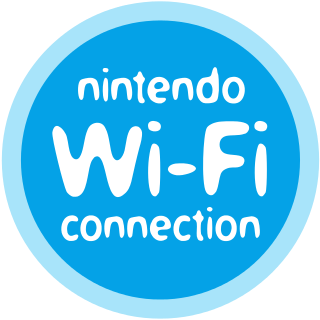
Nintendo Wi-Fi Connection is a defunct online multiplayer gaming service run by Nintendo that formerly provided free online play in compatible Nintendo DS and Wii games. The service included the company's Wii Shop Channel and DSi Shop game download services. It also ran features for the Wii and Nintendo DS systems.
The Virtual Console is a defunct line of downloadable video games for Nintendo's Wii and Wii U home video game consoles and the Nintendo 3DS family of systems.
Game & Watchgames have had many different re-releases.

The Wii Shop Channel is a discontinued digital distribution service for the Wii video game console. The service allowed users to purchase and play additional software for the Wii, including exclusive games, and games from prior generations of video games. The Wii Shop Channel launched on November 19, 2006, and ceased operations on January 30, 2019.
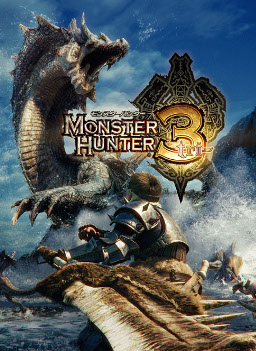
Monster Hunter Tri is the third console installment in the Monster Hunter franchise, developed by Capcom and released for the Wii in Japan on August 1, 2009. Monster Hunter Tri was released on April 20, 2010, in North America, April 23 in Europe, and April 29 in Australia.
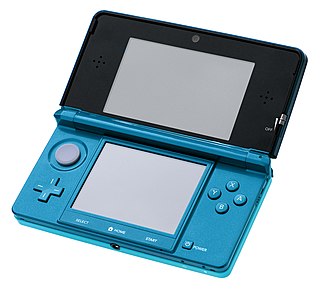
The Nintendo 3DS is a foldable handheld game console produced by Nintendo. The console was announced in March 2010 and unveiled at E3 2010 as the successor to the Nintendo DS. The system features backward compatibility with Nintendo DS video games. As an eighth-generation console, its primary competitor was Sony's PlayStation Vita.
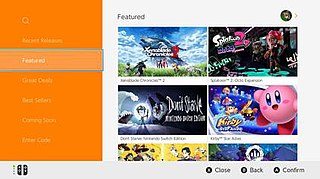
The Nintendo eShop is a digital distribution service for the Nintendo Switch, and formerly available via the Nintendo Network for the Wii U and Nintendo 3DS. The Nintendo eShop was first launched in June 2011 on the Nintendo 3DS via a system update that added the functionality to the HOME Menu. It is the successor to both the Wii Shop Channel and DSi Shop. Unlike on the Nintendo 3DS, the eShop was made available on the launch date of the Wii U, although a system update is required in order to access it. It is also a multitasking application, which means it is easily accessible even when a game is already running in the background through the system software, though this feature is exclusive to the Wii U and the Nintendo Switch. The Nintendo eShop features downloadable games, demos, applications, streaming videos, consumer rating feedback, and other information on upcoming game releases.
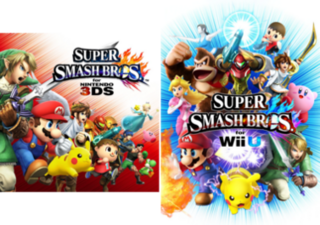
Super Smash Bros. for Nintendo 3DS and Super Smash Bros. for Wii U, both commonly referred together as Super Smash Bros. 4, are 2014 crossover platform fighter video games developed by Bandai Namco Studios and Sora Ltd. and published by Nintendo for the Nintendo 3DS and Wii U video game consoles. It is the fourth installment in the Super Smash Bros. series, succeeding Super Smash Bros. Brawl. The Nintendo 3DS version was released in Japan on September 13, 2014, and in North America, Europe, and Australia the following month. The Wii U version was released in North America, Europe, and Australia in November 2014 and in Japan the following month.
The Nintendo Network is a defunct online service formerly ran by Nintendo that provided free online functionality for the Nintendo 3DS and Wii U systems and their compatible games. Announced on January 26, 2012, at an investors' conference, it was Nintendo's second online service after Nintendo Wi-Fi Connection. Former president of Nintendo Satoru Iwata said, "Unlike Nintendo Wi-Fi Connection, which has been focused upon specific functionalities and concepts, we are aiming to establish a platform where various services available through the network for our consumers shall be connected via Nintendo Network service so that the company can make comprehensive proposals to consumers."

The Wii U operating system is the official firmware version and system software for the Nintendo's Wii U home video game console. Nintendo maintains the Wii U's systemwide features and applications by offering system software updates via the Internet. Updates are optional to each console owner, but may be required in order to retain interoperability with Nintendo's online services. Each update is cumulative, including all changes from previous updates.
Flipnote Studio 3D, known in Japan as Moving Notepad 3D and originally announced as the working title/codename, Flipnote Memo, was an animation application developed by Nintendo EAD Tokyo and released in 2013 for the Nintendo 3DS as a successor to Flipnote Studio and Flipnote Hatena.

The Nintendo 2DS is a handheld game console produced by Nintendo. Announced in August 2013, the device was released in North America, Europe and Australia on October 12, 2013. The Nintendo 2DS is an entry-level version of the Nintendo 3DS which maintains otherwise identical hardware, similar functionality, and compatibility with software designed for the Nintendo DS and 3DS. However, the 2DS is differentiated by a new slate form factor rather than the clamshell design used by its precursors and by lacking the Nintendo 3DS's signature autostereoscopic 3D display. The 2DS was sold concurrently with existing 3DS models as an incentive to expand the market for Nintendo 3DS games; former Nintendo of America president Reggie Fils-Aimé stated that the 2DS was primarily targeted towards younger players, whom Nintendo had previously advised not to use the 3D functionality on the 3DS due to potential eye health concerns. The Nintendo 2DS's successor, the New Nintendo 2DS XL, was launched in 2017.
Amiibo is a toys-to-life platform by Nintendo, which was launched in November 2014. It consists of a wireless communications and storage protocol for connecting figurines to the Wii U, Nintendo 3DS, and Nintendo Switch video game consoles. These figurines are similar in form and functionality to that of the Skylanders, Disney Infinity and Lego Dimensions series of toys-to-life platforms. The Amiibo platform was preannounced to potentially accommodate any form of toy, specifically including general plans for future card games. Amiibo use near field communication (NFC) to interact with supported video game software, potentially allowing data to be transferred in and out of games and across multiple platforms.

Mario vs. Donkey Kong: Tipping Stars is a 2015 puzzle-platform game developed by Nintendo Software Technology and published by Nintendo for the Nintendo 3DS and Wii U. It is the sixth game in the Mario vs. Donkey Kong series and the 200th video game featuring Mario. The game was released worldwide in March 2015 on the Nintendo eShop for all regions, except in Japan. This is the first Nintendo-published title to support a cross-purchase concept, and the first Nintendo 3DS title to support Miiverse stamps. If players buy one version, they receive a free download code for the other version.

Mario & Sonic at the Rio 2016 Olympic Games is a 2016 crossover sports and party game in the Mario & Sonic at the Olympic Games series, released for the Nintendo 3DS in February 2016 in Japan, March 2016 in North America, and in April 2016 for Europe and Australia, and for the Wii U worldwide in June 2016. The game is officially licensed by the International Olympic Committee, as are the other games in the series. It was developed by Sega, with assistance from Arzest and Spike Chunsoft, and published by Nintendo. It is the fifth title in the Mario & Sonic at the Olympic Games series. The game is a collection of Olympic sports themed mini-games featuring characters from the Mario series and the Sonic the Hedgehog series.

My Nintendo is a loyalty program provided by Nintendo and the successor to Club Nintendo. The system allows players to earn points from using software or purchasing games, which can then be spent on rewards such as digital games or discounts. The program launched worldwide in March 2016, releasing alongside Nintendo's first mobile app, Miitomo.












